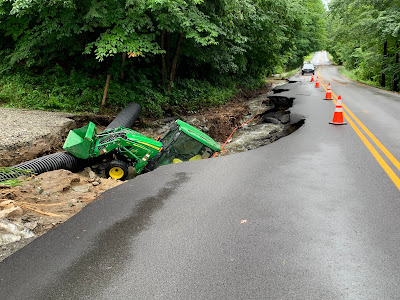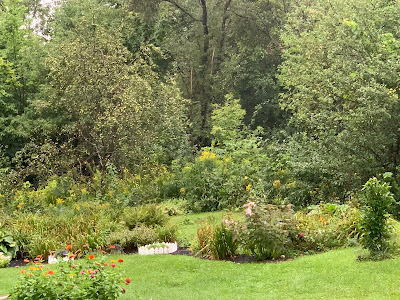Lyndonville Bridge
The Sanborn Covered Bridge will return to its perch over the Passumpsic River in Lyndonville after all.
The bridge had been removed from its spot over the river for restoration. There was never any question of whether the bridge would be restored. But would it need to give up its function as a river crossing?
The Lyndon area and the Passumpsic River have flooded with increasing frequency and severity in recent years, thanks in large part to climate change. People in the region are looking for ways to mitigate these floods.
The Sanborn covered bridge and its abutments are a pinch point in the Passumpsic River, possibly worsening floods upstream. So the question was whether the bridge should go back up where it has been so long.
As WCAX reports, after feedback from Lyndon residents, the bridge will be placed back over the river this fall. However, adjustments will be made to its abutments to allow water to pass through more easily.
Tourism Steady
Despite the international headlines regarding Vermont's floods this summer, the all-important tourism traffic to Vermont seemed to be steady, WCAX also reports. Their article didn't have much in the way of numbers, revenue and that kind of thing. Mostly, I believe because it's too soon to tally things like sales tax and rooms and meals tax revenue for the summer.
Bookings for the fall foliage tourism season in Vermont seem to be running a little ahead of last year, too.
Still, as reported earlier this summer, not everyone is doing well after the flooding. Nearly 350 Vermont businesses have already reported flood damage. And businesses in some of the hardest hit communities like Lyndonville, East Burke, Plainfield and Barre are still struggling.
Snowmobile Trails In Rough Shape
Vermont has about 5,000 miles of snowmobile trails, and those are an important part of the state's winter tourism. As WPTZ reports, so far, there's at least $1 million in damage to the trails and that damage is scattered over wide areas.
Getting things fixed in time for winter will be complicated. As WPTZ says:
"The trails that span near 5,000 miles across the state are split between locally owned land, state land and private property, which makes it harder to qualify for flood help."
Still, the Vermont Association of Snow Travelers, which maintains the trails, say volunteers are helping fix the damage and the trails should largely be in good shape this winter.
If it snows for a change.
Humidity, Rain Contribute To Late Schools
Some schools in Vermont have delayed openings this fall because of hazardous mold. The problem is a combination of outdated HVAC systems and an especially humid summer that contributed to moisture in school buildings, and resulting mold.
By some meteorologists' estimates, this has been the most humid summer on record in Vermont. All that lingering moisture has created mold issues in schools like Otter Valley High School, Milton Elementary, and Moretown Elementary.
Moretown Elementary was damaged by flooding last December.
"We are seeing a lot of flooding, a lot of rain, a lot of moisture and similar to our roads and infrastructure, our schools are not ready, they're not prepared for these kinds of changes," Sen. Brian Campion, the chair of the Vermont Senate Education Committee told WPTZ.
Some FEMA Aid Delayed
The Federal Emergency Management Agency is once again out of cash, and that will delay some assistance to Vermont towns and cities that suffered damage this summer, Vermont Public reports.
Individual homeowners and renters in seven Vermont counties can still get funds from FEMA. More than 500 people have applied.
But as Vermont Public tells us, FEMA is technically out of cash, so they can't pay local and state governments to fix roads, bridges and other infrastructure.
That money should come through eventually, but Congress has to pass a budget first. Good luck with that, as the U.S. Senate and especially House can't seem to get anything done these days.
























